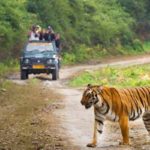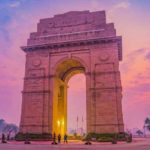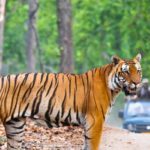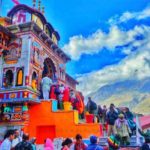Jim Corbett National Park Thousands of people visit the Jim Corbett National Park each year because of its natural beauty and diverse wildlife. According to official records, the number has risen significantly over time.
The Jim Corbett National Park, located in the Himalayan foothills, covers an area of 1288 square kilometres. With over 160 tigers calling the territory home, it is India’s last stronghold for big cats. Aside from that, the Park is one of thirteen protected areas under the World Wildlife Fund’s Terai Arc Landscape Program, which seeks to protect three of the five terrestrial flagship species: the tiger, Asian elephant, and Great One-horned Rhinoceros.
The Jim Corbett National Park is best known for the elusive Bengal Tiger and Corbett Safaris, but it also has a diverse range of animals and birds, including deer, wild boar, and elephants. The King Cobra (Ophiophagus hannah) and Indian Cobra (Ophiophagus indicus) are two snake species that have been recorded from this region (Naja naja). Rock Pythons (Python molurus) are commonly seen in India sighted and there also exist several kinds of vipers, kraits and boas.
The park was originally known as ‘Hailey National Park,’ after Sir Hailey, the governor of the United Provinces. In 1952, the park was renamed ‘Ramganga National Park,’ and in 1955-56, it was renamed ‘Jim Corbett National Park,’ after Edward Jim Corbett. Jim Corbett was a well-known author and wildlife conservationist who was instrumental in the creation of the reserve his influence to persuade the provincial government to establish it.
In the midst of lush greenery, Jim Corbett National Park and Le Roi Corbett Resort are the ideal combination of harmony and tranquilly. The Resort is an ideal place to get away from it all and relax in the lap of mother nature. With big windows and fresh air, the resort takes inspiration from the National Park and extends the experience in your bed, unique architecture and natural landscapes.
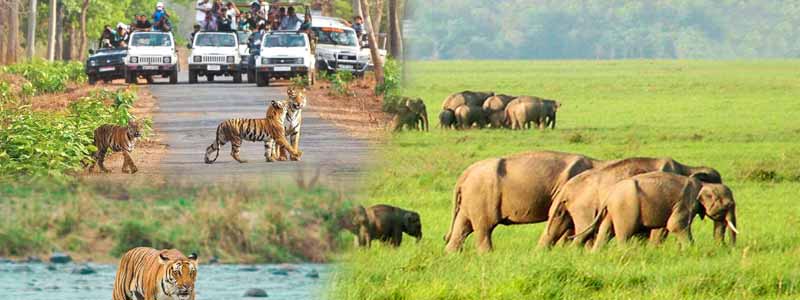
History
The princely state of Tehri-Garhwal ruled over parts of the new reserve. Before the British arrived in the early nineteenth century, the woods here were privately owned by the local rulers (Tehri-Garhwal was absorbed into the Punjab Hill States Agency during British rule). Major Ramsay (under whose authority the area fell) devised a forest protection plan in 1858. In an attempt to preserve the land, the Forest Department took control of it in 1868, prohibiting cultivation and the operation of cattle stations. Limited felling was permitted in 1879, and the area was designated as a reserved forest.
More than a half-century later, Sir Malcolm Hailey, the then-Governor of the United Provinces, Recalling an earlier British proposal from 1907, he expressed his intention to transform the forest area into a game reserve. The sanctuary’s boundaries were drawn up in conjunction with Jim Corbett, who used his clout in the provincial government to help create the sanctuary. The United Provinces National Park Act was enacted in 1936, Hailey National Park was the first national game park in India. It was renamed Ramganga National Park in 1957 before being renamed Corbett National Park in 1966.
Corbett’s new core area was built in 1966 to house animals such as tigers and elephants. Sonanadi Wildlife Sanctuary, to the west, was recently added. The Tiger Reserve is made up of the protected areas of Corbett National Park and Sonanadi today. In 1973, ‘Project Tiger’ was introduced in Corbett.
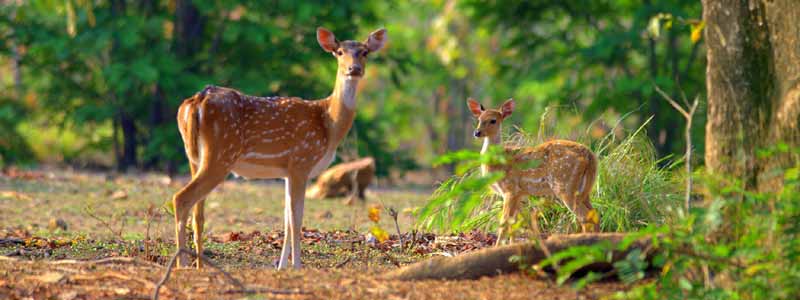
Wildlife Safari In Jim Corbett National Park
For tourists to begin their adventure wildlife trip into the forest, Jim Corbett National Park offers unrivalled options such as jeep safari, elephant safari, and canter safari.
- Elephant Safari : A ride on the back of an elephant is both trendy and enjoyable. The elephant safari begins at the reserve’s Durgadevi gate (north-eastern border) and ends at Halduparao (north-western boundary). Elephant safari costs INR 500 per person for Indians and INR 1500 per person for foreigners. Just four people can be carried by one elephant at a time. It is responsible for the Bijrani region. Elephant rides are available from 6:30 a.m. to 10:00 a.m. in the morning and 1:30 p.m. to 5:30 p.m. in the afternoon.
- Jeep Safari : On a jeep safari, explore Jim Corbett National Park’s wilderness and diverse flora and fauna. It is the quickest and most comfortable way to get around this place. Jeep safari costs INR 4000 per Jeep for Indians and INR 7000 per Jeep for foreigners. In a single Jeep, only 6 people are allowed. It includes areas such as Bijrani, Sitabani, and Jhirna. Durgadevi has a different charge of INR 4500/Jeep. Jeep safaris are available from 5:30 a.m. to 9:00 a.m. and 3:30 p.m. to 7:00 p.m. in the morning and evening.
- Canter Safari : The only way to visit Dhikala forest or stay in a resort is to go on a centre safari. In a day, there are two canter safari services: one at 0600 Hrs (sunrise time) and the other at 1200 Hrs (sunset time) (afternoon). The 05-hour canter safari trip can have a great deal of enjoyment. Canter safari costs INR 1500 per person for Indians and INR 3000 per person for foreigners. Dhikala is covered by the canter, which has 16 benches. Canter safaris are available from 6:00 a.m. to 11:30 a.m. in the morning and 12:00 p.m. to 5:30 p.m. in the afternoon.
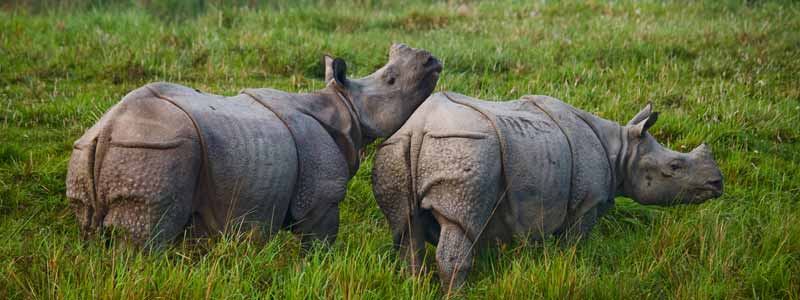
Jim Corbett Safari Timings
Safari with Jim Corbett In the summer and winter, the park gates open at 0600 hrs for morning safari trips and 1430 hrs for afternoon safari trips; the Jim Corbett Safari trip lasts 3 hours. Safari timings can be found on the government’s online safari booking website or at the Jim Corbett National Park government office in Ramnagar at the time of booking.
The opening dates for Jim Corbett National Park in 2019 are 15th October for Bijrani and 15th November for Dhikala Gate, depending on monsoon and road conditions within the park. If you’re planning a trip to Jim Corbett in July, August, or September 2019, don’t worry; the Jim Corbett National Park administration is now accepting provisional bookings for the Jhirna and Dhela Zone Gates.
- Park Entry : 06:30 hours to 17:30 hours. (timing flexible as per season)
- Jeep Safaris : 06:30 hours to 09:30 hours and 13:30 hours to 17:30 hours.(timing flexible as per season)
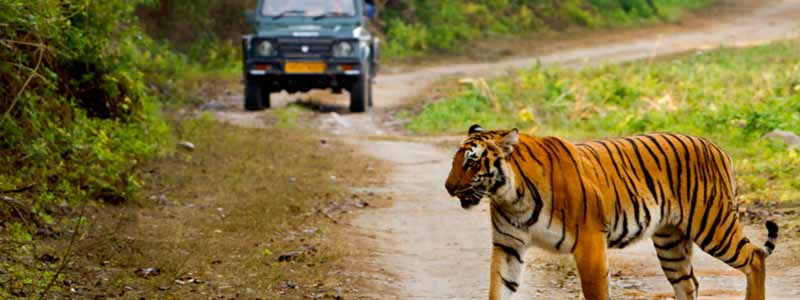
Different safari zones in the Jim Corbett National Park are as follows
Everyone needs to visit Jim Corbett National Park because it is a wildlife haven. Every year, the park is inundated with visitors from all over the world, not just from India. Corbett is divided into several safari areas, including:
1. Dhikala zone – This is Corbett’s largest and most diverse region, with the best options for overnight stays. The Ghoral, a goat antelope, thrives in the higher reaches of Dhikala, while the Gharial and Maggars, as well as the great Mahaseer, live in the lower reaches. Dhikala is also home to the hog deer. Dhikala has the most diverse landscape of them all, The park’s widest selection of Forest Rest House accommodations, if booked well in advance. The Ramganga river runs through the middle of this forest block, emptying into a wide, multi–necked reservoir.
2. Jhirna zone – It’s a heavily wooded and grassland area that’s great for bird watching. The Great Hornbill can be found in large numbers here. Jhirna is home to an increasing tiger population, as well as a population of sloth bears and wild elephants. Jhirna is enhanced by a huge grove of ‘Flame of the Trees.’ It also appeals to big cats due to a large prey base of nilgai, cheetal, sambhar, and wild boar, While a resident population of wild elephants and sloth bears provide excellent sighting opportunities.
3. Bijrani zone – There are three large grasslands, as well as pure Sal forests on the upper reaches and deciduous mixed forests in the valley. Bijrani is excellent tiger sighting territory because it supports a diverse range of herbivores and has a large network of jungle roads. With a vast network of criss–crossing jungle paths, this carved out of a shooting block provides excellent tiger sighting opportunities.
Bijrani’s forests, which run along Corbett‘s eastern border, are densely forested with a diverse range of vegetation, including pure Sal forests in the upper reaches and tropical wet, deciduous mixed forests in the valley and plains. It is an excellent habitat for a large prey base and its predator due to its year-round water supply and vast grasslands.
4. Durga Devi zone – This area is well-known for bird watching and fishing for the large fish species ‘Mahasheer.’ Durga Devi is located in the north–east corner of Corbett Park and is home to a variety of bird species including the maroon orile, great headed fishing eagle, little forktail, and others. Wild elephants, leopards, and tigers frequent the Mandal and Ramganga rivers in this forest.
5. Dhela zone – Dhela is a new eco-tourism zone in Corbett National Park included in the tiger reserve zone in November.
6. Sitabani Buffer Zone – If you are fond of the serene ambiance of the natural beauty, you must visit the Sitabani area.
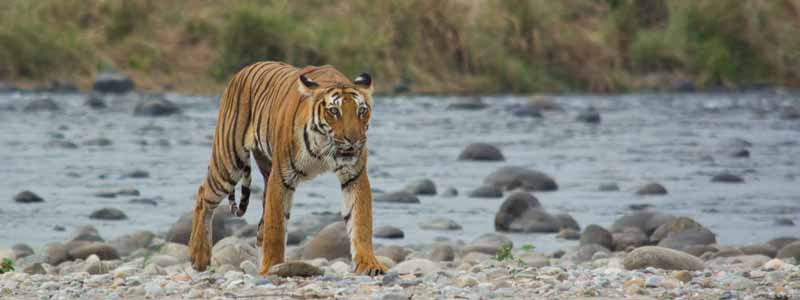
Best Time To Visit Jim Corbett National Park
There are three distinct seasons in this park: winter (November to February), summer (March to June), and monsoon (July to October). The best time to go is after mid-November and before the end of June. That’s when you’ll be able to go on all of the park’s rides.
Another thing to keep in mind when making travel plans is that this park is divided into areas. Jhirna is a year-round zone that is open to the public. Since both of these zones have a drier area, the Sitabani zone remains open at all times.
However, the Bijarani region, which is open from mid-October to June and is regarded as the epicentre of wildlife conservation efforts, is open from mid-October to June, is open from the middle of November to the beginning of the winter. The Dhikala zone is the best of them all, with the largest number of tigers and cubs freely roaming about, but it is only open from mid-November to mid-June each year. From November to June, there is also a Durga Devi zone available. The connecting roads are totally washed away during the rainy seasons, which is why they were held near before.
The park’s nice climate makes it a popular tourist destination all year, but the best time to visit Jim Corbett National Park is in the winter. At that time, you can easily check out the sanctuary’s length and width and have fun exploring.
During the summer, you can also visit. Although the weather can be hot, you will still be able to see the park without difficulty. Monsoons in the jungles bring out the earthy smells and a sense of adventure, but some zones are closed off during this period, making your journey incomplete.
Bear in mind that the park closes at night, usually between 5 and 6 p.m., depending on the season. You are not permitted to remain on the premises, so double-check the hours before entering.
- Summer time In Jim Corbett National Park (From May To March)
Temperatures can reach 40 degrees Celsius here, but the area is typically very cool due to the abundance of trees and plants. Most of the time, humidity levels are low. Summers aren’t always cool, but they’re still pleasant enough to spend time exploring.
- Monsoon Time In Jim Corbett National Park (From June To August):
The rain brings out the park’s greenery, making it a beautiful sight to behold. Every nook and cranny, every flora and fauna, is singing and happy. During this season, some zones are closed because rain washes out the roads linking them, making them dangerous. However, the thrilling offers and bargains are enticing reasons to visit during the monsoon season. Despite the fact that now is not the best time to visit, you can always make it worthwhile.
- Winter Time In Jim Corbett National Park (From October To February):
The park is much more stunning in the winter after the heavy rains work on the greenery here. The environment is relaxing, and all of the animals and birds are free to explore the park. This park, as well as the rest of Uttarakhand, is best visited in the winter.
After you’ve had your fill of the park’s elegance, don’t forget Dhikuli, one of the area’s other must-see attractions. For a relaxing lunch or snack, visit the Corbett Falls. To get the most out of this park, consider going on a jeep safari.
Elephant rides, river rafting, visiting the Corbett museum, and visiting the Garjiya Temple are some of the other activities available. There is also a shooting range named Birjani, as well as a beautiful location on the banks of the Kosi River that is a popular tourist attraction.
Now that you know when you can go to Jim Corbett National Park, here’s how to get there the simplest and most satisfying way possible. You can fly to New Delhi or Dehradun, which are the closest airports and are approximately 5 hours away by road from Jim Corbett National Park. And, as a traveler’s best friend, Jim Corbett National Park not only lets you gain miles on your flight bookings, but also promises to make your journey more rewarding, but also on your hotel reservations and any fuel costs you can incur on your way to Jim Corbett if you hire a cab and take a road trip.
How to Reach Jim Corbett National Park
Ramnagar is a small town near the Jim Corbett National Park that is easily accessible by road and rail from all of India’s major cities, including Delhi, Nainital, Moradabad, and Bareilly. The National Park is just 15 kilometres from Ramnagar railway station, so it takes only half an hour to get there.
- Roadways : Ramnagar’s incredible road network links India’s major cities. Since Jim Corbett National Park is located 260 kilometres from India’s capital, Delhi, the state government of Uttarakhand operates several buses to connect Delhi, Nainital, Haldawani, and Moradabad.
- Railways : Ramnagar Railway Station receives trains from all over India, including Delhi, Bareilly, and Moradabad. The Corbett Link Express, Ranikhet Express, and Kathgodam Express are all direct trains from Delhi to Ramnagar.
Distance between the Major Cities and Jim Corbett National Park
- Delhi – Ramnagar (260 Km)
- Nainital- Ramnagar (62 Km)
- Lucknow- Ramnagar (436 Km)
- Dehradun- Ramnagar (232 Km)

